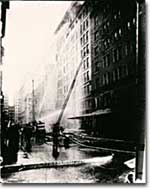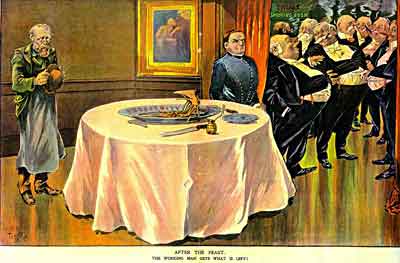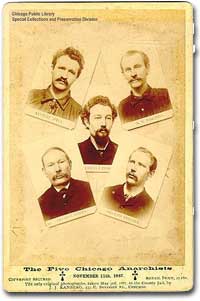
37. Organized Labor

Labor laws were passed after the disastrous 1911 Triangle Shirtwaist Company fire. 146 people were killed because the company owners had locked doors in an attempt to keep the workers from leaving.
In the mid-19th century, the vast majority of American work was still done on the farm. By the turn of the 20th century, the United States economy revolved around the factory.
Most Americans living in the Gilded Age knew nothing of the millions of Rockefeller, Carnegie and Morgan. They worked 10 hour shifts, 6 days a week, for wages barely enough to survive. Children as young as eight years old worked hours that kept them out of school. Men and women worked until their bodies could stand no more, only to be released from employment without retirement benefits. Medical coverage did not exist. Women who became pregnant were often fired. Compensation for being hurt while on the job was zero.

This 1899 political cartoon, published in The Verdict, represents the growing disparity between the rich and poor classes in America. This disproportion fomented the formation of anti-trust laws in the following decade.
Come Together
Soon laborers realized that they must unite to demand change. Even though they lacked money, education, or political power, they knew one critical thing. There were simply more workers than there were owners.
Unions did not emerge overnight. Despite their legal rights to exist, bosses often took extreme measures, including intimidation and violence, to prevent a union from taking hold. Workers, too, often chose the sword when peaceful measures failed.
Many Americans believed that a violent revolution would take place in America. How long would so many stand to be poor? Industrial titans including John Rockefeller arranged for mighty castles to be built as fortresses to stand against the upheaval they were sure was coming.
Slowly but surely unions did grow. Efforts to form nationwide organizations faced even greater difficulties. Federal troops were sometimes called to block their efforts. Judges almost always ruled in favor of the bosses.

The workers often could not agree on common goals. Some flirted with extreme ideas like Marxism. Others simply wanted a nickel more per hour. Fights erupted over whether or not to admit women or African Americans. Immigrants were often viewed with hostile eyes. Most did agree on one major issue — the eight-hour day. But even that agreement was often not strong enough glue to hold the group together.
Organized labor has brought tremendous positive change to working Americans. Today, many workers enjoy higher wages, better hours, and safer working conditions. Employers often pay for medical coverage and several weeks vacation. Jobs and lives were lost in the epic struggle for a fair share. The fight sprouted during the Gilded Age, when labor took its first steps toward unity. It began with the Great Upheaval.





